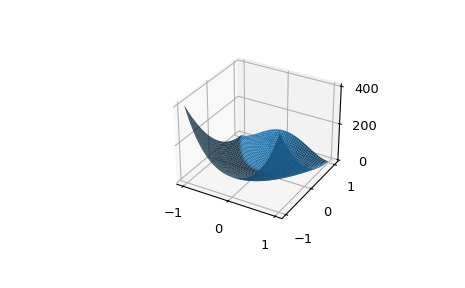rosen#
- scipy.optimize.rosen(x)[source]#
The Rosenbrock function.
The function computed is:
sum(100.0*(x[1:] - x[:-1]**2.0)**2.0 + (1 - x[:-1])**2.0)
- Parameters:
- xarray_like
1-D array of points at which the Rosenbrock function is to be computed.
- Returns:
- ffloat
The value of the Rosenbrock function.
See also
Notes
Array API Standard Support
rosenhas experimental support for Python Array API Standard compatible backends in addition to NumPy. Please consider testing these features by setting an environment variableSCIPY_ARRAY_API=1and providing CuPy, PyTorch, JAX, or Dask arrays as array arguments. The following combinations of backend and device (or other capability) are supported.Library
CPU
GPU
NumPy
✅
n/a
CuPy
n/a
✅
PyTorch
✅
✅
JAX
✅
✅
Dask
✅
n/a
See Support for the array API standard for more information.
Examples
>>> import numpy as np >>> from scipy.optimize import rosen >>> X = 0.1 * np.arange(10) >>> rosen(X) 76.56
For higher-dimensional input
rosenbroadcasts. In the following example, we use this to plot a 2D landscape. Note thatrosen_hessdoes not broadcast in this manner.>>> import matplotlib.pyplot as plt >>> from mpl_toolkits.mplot3d import Axes3D >>> x = np.linspace(-1, 1, 50) >>> X, Y = np.meshgrid(x, x) >>> ax = plt.subplot(111, projection='3d') >>> ax.plot_surface(X, Y, rosen([X, Y])) >>> plt.show()
